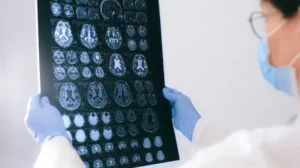Childhood Epilepsy May Predispose People to Memory Disorders Later in Life
February 25, 2025
Article published by Science Daily
Featuring work by CURE Epilepsy grantee, Dr. Bruce Hermann
Collaborating together, researchers from the University of Turku, Åbo Akademi University in Finland, and the University of Wisconsin showed that individuals who had childhood epilepsy have an increased amount of a protein called amyloid in their brains later in life, potentially predisposing them to late-onset brain disorders such as Alzheimer’s disease.
The study is based on a unique cohort of individuals who had childhood epilepsy that has been monitored continuously for health and social outcomes since the early 1960s. Clinical follow-up of this cohort and matched control subjects is conducted at regular intervals. A recent analysis examined the amount of brain amyloid in these individuals who ranged in age from 60-65 years old and their controls. In the previous timepoint of the study (2013-2016), after 50 years of follow-up, researchers observed that individuals with childhood epilepsy had more amyloid plaques in their brains than the controls.
In the recent analysis, abnormal amyloid accumulation was observed in nearly one-third of the participants, whereas only 11 percent of the controls showed this accumulation. During the seven-year follow-up, the patient group accumulated more amyloid in the brain than the controls. The patient group also performed worse in cognitive tests compared to the controls, but this was not linked to the amount of amyloid plaques. “This suggests that the amyloid accumulation in the brain has not yet led to memory disorders,” explains Dr. Juho Joutsa, Professor of Neurology at The University of Turku.
“This study is also an excellent example of what can be achieved scientifically through long-term commitment of both participants and researchers, as well as collaboration across disciplines and generations of researchers,” says Joutsa.




